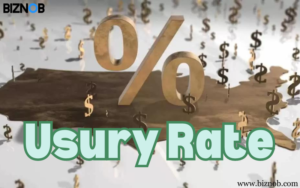What is the underground economy?
The term “underground economy” describes economic activities considered illicit due to a failure to comply with official reporting requirements or because the items or services being exchanged are illegal. The informal economy, black market, or shadow economy are other names for the underground economy.
Recognizing the Informal Sector
Because underground economies are, by definition, unregulated and do not produce tax returns or official statistical reports, it is challenging to determine their exact size. Nevertheless, tracking outgoing expenditures can provide some sense of statistics, even though the transactions are hidden. Put another way, the amount spent not included in officially documented transactions presumably reflects the scope of black market activity.
In 2009, the estimated value of the American underground economy was $1 trillion, or roughly 8% of the country’s GDP. However, by 2013, underground economic expenditures had reached an estimated $2 trillion, primarily as a result of the long-term effects of the 2008 financial crisis and the subsequent contraction of the formal economy. Although estimates differ, research indicates that the U.S. underground economy accounts for 11% to 12% of GDP, or over $2.5 trillion in 2021.
Worldwide Underground Markets
A 2018 International Monetary Fund study that examined the shadow economies of 158 countries between 1991 and 2015 found that, in comparison to most other countries, America’s shadow economy has remained relatively flat. The following are some of the report’s main conclusions:
- The average value of the shadow economy’s size across all countries was 31.9%.
- The three countries with the biggest shadow economies were Bolivia (62.3%), Georgia (64.9%), and Zimbabwe (60.6%).
- The United States (8.3%), Austria (8.9%), and Switzerland (7.2%) are the three weakest shadow economies.
The effects of underground economies may be beneficial or detrimental, depending on the situation. For instance, uncollected taxes in developing nations with sizable shadow economies can impede the development of public programs and slow economic growth. Conversely, in other situations, those engaged in underground economies who keep money that would otherwise go to taxes can increase demand and overall economic activity.
This is particularly true in countries where dishonest government officials would have diverted the withheld tax payments.
What qualifies as “underground”?
Depending on the legal framework of a particular state, a variety of acts might be classified as underground commercial transactions. For instance, whereas some governments support lawful brewing, distilling, and distribution businesses, others outlaw alcohol. Similar to this, while most countries forbid the use or sale of narcotics, some have allowed the sale of cannabis, and a growing number of U.S. states have done the same.
Mexican immigrants brought marijuana usage for recreational purposes to the U.S. in the early 1900s. High unemployment rates during the Great Depression led to worries about marijuana use, which, at the time, when combined with racial beliefs, produced studies connecting marijuana to violent crime.
As a result, 29 U.S. states had banned the medication by 1931. However, many individuals continued to purchase and sell the plant illegally because they believed it was safe. Later research disproved the notion that marijuana use was associated with criminal activity, concluding that the drug was neither addictive nor a gateway to other substances. Instead, supporters contend that medical marijuana has shown promise in the treatment of diseases, including AIDS and cancer.
The plant, widely found in numerous food items and oral and topical treatments, is currently authorized for medicinal use in 37 states and the District of Columbia as of 2022. By 2022, cannabis for non-medical use will be legal in 18 states and Washington, D.C.
When a person earns more than $400 in a single year (as of 2022), they are required by the IRS to record the money as taxable self-employment income on their tax return.
Meanwhile, according to the most recent data, illicit economic activities enabled 53.2% of New York State’s cigarette sales in 2018. Even though tobacco is legal in New York City, a significant portion of sales go “under the table” or go unreported due to the product’s high sin tax.
Technically, these under-the-table transactions—in which parties omit to disclose their revenue to the state or the IRS—are classified as underground economic operations. This situation may even include nannies who fail to disclose the money they take home from babysitting a neighbor’s kid across the street.
Smuggling items into a nation to avoid paying customs at the border and the untaxed sale of tangible products are two other main instances of underground economic activity. The underground economy also includes marketplaces for illegally procured human organs, antiques, endangered animal species, and copyrighted products.
Which nation has the biggest shadow economy?
With an estimated 60.6% of its GDP derived from subterranean activity, Zimbabwe boasts the most excellent underground economy. With its 7.2% share of the GDP, Switzerland has the lowest subterranean economy.
What Qualities Make Up an Underground Economy?
Illicit acts like buying and selling illicit substances or selling firearms are not the only things that take place in underground economies. It also covers any undisclosed money from tasks like childcare or underhand payments made to restaurant staff. Similarly, trading outside official records without exchanging money is seen as being in the shadow economy.
Why Do Individuals Work in the Illegal Economy?
Individuals practice the underground economy for several reasons. These motivations might be as simple as acquiring goods—like illegal narcotics and weapons—that they are unable to purchase lawfully. It may also be done to evade administrative paperwork, labor rules, and taxes.
Conclusion
- Although figures differ, some estimate the underground economy to be between 11% and 12% of the GDP of the United States, or between $2.25 trillion and $2.5 trillion.
- The components of the black market economy differ across countries, states, and sometimes even between municipalities.
- The informal economy, black market, and shadow economy are other terms for the underground sector.
- Some examples of activity in the underground economy include dealing in illicit narcotics, human trafficking, endangered species, human organs, antiques, and stolen commodities.


































